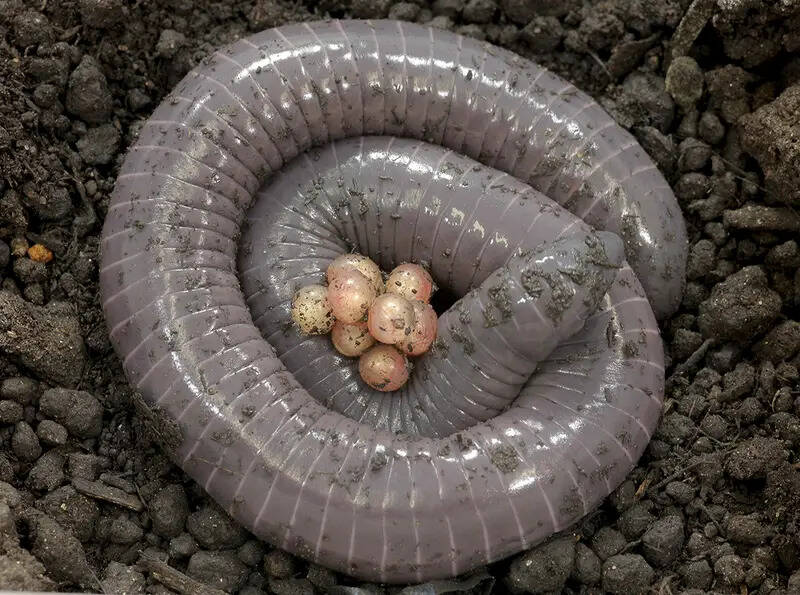After reviewing footage of ringed caecilians, researchers learned the creatures have unusual methods of caring for offspring that include producing milk and growing new skin.

Carlos JaredA pigmented female ringed caecilian with her young.
Researchers in Brazil have discovered the first egg-laying amphibian known to feed its young “milk.” And unlike mammals, the ringed caecilian produces the nutrient-rich milk from its rear end.
What’s more, the milk serves as a supplement to a protein-packed layer of skin that the mother also grows to feed its offspring. Now, this finding is shifting scientific understanding of amphibian birthing behavior.
The Lives Of Ringed Caecilians
Ringed caecilians are one of 220 known species of caecilian — a group of limbless amphibians that spend most of their lives underground. A few species of caecilians give live birth, but the ringed caecilian lays eggs.
“They are one of the least-well understood vertebrates, because access to these animals is very difficult,” Carlos Jared, the lead author of the study published in the journal Science and a biologist at São Paulo’s Butantan Institute, told Popular Science.
The elusiveness of this creature made it difficult to discover its milk-making capabilities. In fact, had it not been for the production of a BBC nature series, researchers might not have observed the ringed caecilian’s unique parenting strategies.
Over a decade ago, a BBC team working on the 2008 series Life in Cold Blood captured rare footage of a female ringed caecilian with her offspring. The tiny amphibians appeared to be in a frenzy, tearing off pieces of their mother’s skin. Later, researchers discovered that breeding females developed this protein-packed outer layer to feed their young.
“We were so intrigued by this that we didn’t pay much attention to the other behaviors we saw,” study co-author Marta Antoniazzi, another researcher at the Butantan Institute, told Scientific American.
The initial footage encouraged the researchers to dive deeper into ringed caecilian parenting strategies. And what they found changed their understanding of amphibian behavior.
An Amphibian Full Of Surprises

Carlos JaredA female ringed caecilian with her eggs.
Researchers decided to review the BBC footage thoroughly and take note of any other strange behaviors. First, they noticed that ringed caecilian young kept themselves close to the mother’s cloacal opening, the rear channel that serves urinary, digestive, and reproductive purposes.
“The babies’ heads were close to the female’s cloacal opening all the time,” Jared told Scientific American. “Some even put their heads inside and seemed very excited.”
The team decided to compare the intestines, bladders, cloacae, and oviducts of female ringed caecilians with and without offspring. Within the mothers’ oviducts, they found large glands full of fatty acid and a sugar-rich milky substance.
The makeup of this “milk” was very similar to that of mammals. Researchers noted that it likely supplemented the protein-rich skin that the babies fed on once a week.
Additionally, researchers discovered that the offspring wriggled near the cloacal opening and emitted high-pitched sounds to encourage the mother to release her milk. This phenomenon could occur up to six times a day. Such begging behavior has never been observed in amphibians before.
Now, researchers say these findings offer possible insights into how caecilians evolved.
“It makes it easier to conceive of how some [live-bearing caecilians] could have evolved from [egg-laying] species that already used their oviducts to produce food,” Mark Wilkinson, an evolutionary biologist at the Natural History Museum in London, told Science News. “We really have learned a lot about caecilians in the last few decades, but we are only seeing the tip of the iceberg.”
After reading about these strange amphibians, discover the glass frog, a completely transparent amphibian found in the rainforests of the Americas. Then, read about the blue-ringed octopus, one of the deadliest animals in the world.





